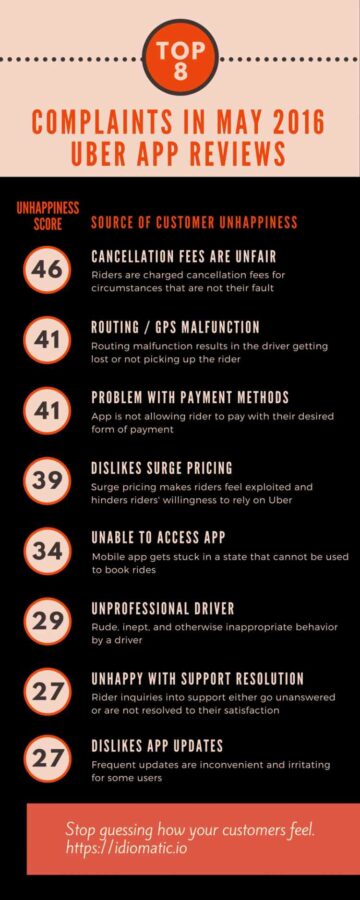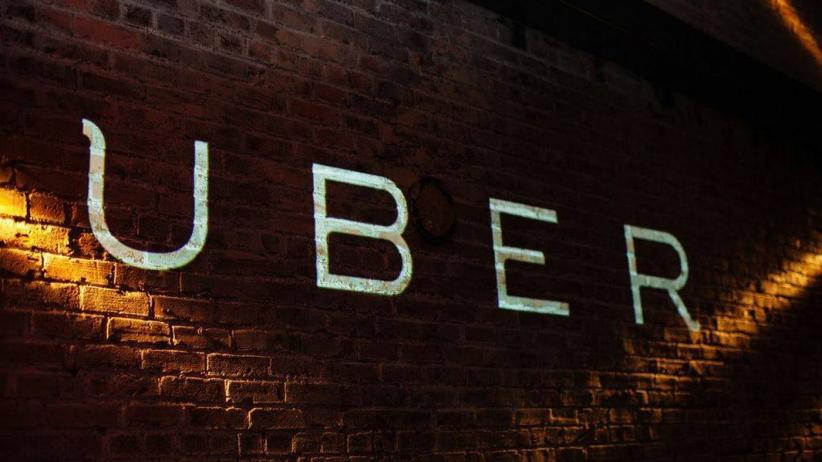Idiomatic helps companies identify pain points and friction for their users by structuring their customer feedback (support emails, reviews, survey comments). The data below comes from our platform. If you want to explore the Uber data in Idiomatic’s dashboard, request a login.
Without a doubt, Uber is a business and social phenomenon. Despite being a magnet for controversy (e.g., cities forcing them out), Uber continues to thrive because it has created a magical experience for a large swath of riders. But, Uber’s path to world domination / IPO requires continued growth, which means winning over more riders and fending off competitors. And the only way it can do that is to make sure an ever larger fraction of those who try Uber fall in love with the experience.
Constantly improving the customer experience is easier said than done. Fortunately, Uber customers are a vocal bunch, and provide a torrent of useful feedback in the form of Apple and Google Play app store reviews. Now, you might be thinking “the app store is full of crazy people,” but as you’ll see shortly, the crowd is actually quite wise in aggregate, and ignoring their feedback is a huge lost opportunity.
Here are the top eight causes of customer unhappiness for Uber customers, courtesy of the Idiomatic platform. The complaints are ranked by Unhappiness Score, which measures both the frequency and intensity of each complaint.

Let’s put this data to work.
Shortly before the publication of this analysis, Uber announced that they are rolling out “upfront fares”, which makes the total ride cost transparent at the point of booking, even when surge pricing is active. Notably, the underlying practice of surge pricing has not changed, but the rider will now know exactly what the price is before starting the ride.
On the surface, this seems like a logical change. After all, surge pricing is the fourth largest source of unhappiness, and upfront fares address the criticism that Uber fares are not transparent without compromising the underlying economics. However, once we reviewed the underlying feedback, it became clear that fewer than 10% of the riders complaining about surge pricing do so because they did not know surge pricing was in effect. Most complaints about surge pricing come from customers who understand how it works and the underlying theory of supply and demand, but still find the sudden price spikes frustrating.
Given this insight, our expectation is that the introduction of upfront fares will have a minor (<10%) impact on the amount of unhappiness caused by dynamic pricing, because it doesn’t address the underlying problem.
Solving problems your customers don’t have is the #1 way to waste time & money. [tweet this]
When companies build products without a precise understanding of why customers are unhappy, it can be easy to waste a lot of time and product resources solving problems that sound similar to the real customer pain points but are ultimately off the mark. As illustrated in this Uber upfront fares example, a product initiative that directly addressed one of the top customer pain points could have had a 10x greater impact on customer happiness.
If you want to see more interesting analyses like this, click the “follow” button to the right to be notified when we release new content. Or, if you want to explore Uber’s app review data yourself with the Idiomatic dashboard, click here for a login.




